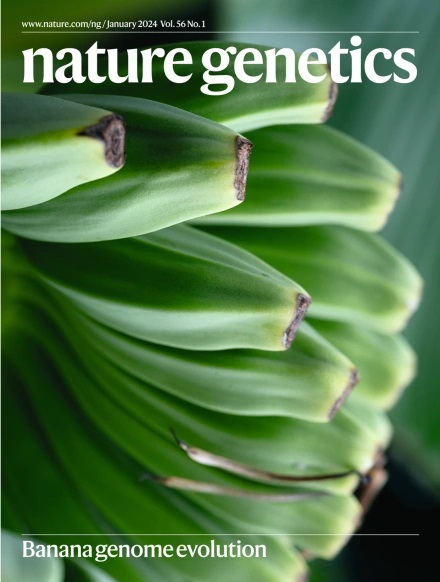高风险神经母细胞瘤的纵向单细胞多组图谱揭示了化疗诱导的肿瘤微环境重新布线
IF 31.7
1区 生物学
Q1 GENETICS & HEREDITY
引用次数: 0
摘要
高危神经母细胞瘤是儿童癌症死亡的主要原因之一,它表现出大量的肿瘤内异质性,导致治疗耐药。为了了解治疗过程中肿瘤微环境的演变,我们使用单核RNA和ATAC测序以及全基因组测序对22例高危神经母细胞瘤患者在诱导化疗前后进行了纵向分析。这揭示了治疗后肿瘤和免疫细胞亚群的深刻变化,并确定了神经母细胞瘤肿瘤状态的增强子驱动的转录调节因子。较差的预后与增生性和代谢活跃的肿瘤状态相关,而分化程度较高的神经元样状态预示着较好的预后。治疗后间充质肿瘤细胞的比例增加,高比例与较差的化疗反应相关。巨噬细胞向促血管生成、免疫抑制和代谢表型显著扩张。我们确定了旁分泌信号网络,并验证了巨噬细胞和肿瘤亚群之间的HB-EGF-ERBB4轴,通过诱导ERK信号传导促进肿瘤生长。这些发现共同揭示了高风险神经母细胞瘤治疗反应的内在和外在调节因子。本文章由计算机程序翻译,如有差异,请以英文原文为准。

Longitudinal single-cell multiomic atlas of high-risk neuroblastoma reveals chemotherapy-induced tumor microenvironment rewiring
High-risk neuroblastoma, a leading cause of pediatric cancer mortality, exhibits substantial intratumoral heterogeneity, contributing to therapeutic resistance. To understand tumor microenvironment evolution during therapy, we longitudinally profiled 22 patients with high-risk neuroblastoma before and after induction chemotherapy using single-nucleus RNA and ATAC sequencing and whole-genome sequencing. This revealed profound shifts in tumor and immune cell subpopulations after therapy and identified enhancer-driven transcriptional regulators of neuroblastoma neoplastic states. Poor outcome correlated with proliferative and metabolically active neoplastic states, whereas more differentiated neuronal-like states predicted better prognosis. Proportions of mesenchymal neoplastic cells increased after therapy and a high proportion correlated with a poorer chemotherapy response. Macrophages significantly expanded towards pro-angiogenic, immunosuppressive and metabolic phenotypes. We identified paracrine signaling networks and validated the HB-EGF–ERBB4 axis between macrophage and neoplastic subsets, which promoted tumor growth through the induction of ERK signaling. These findings collectively reveal intrinsic and extrinsic regulators of therapy response in high-risk neuroblastoma. Analysis of pre- and post-chemotherapy samples collected from 22 patients with high-risk neuroblastoma using single-nucleus RNA and ATAC sequencing and spatial omics characterizes therapy-related changes in cell composition and the tumor microenvironment.
求助全文
通过发布文献求助,成功后即可免费获取论文全文。
去求助
来源期刊

Nature genetics
生物-遗传学
CiteScore
43.00
自引率
2.60%
发文量
241
审稿时长
3 months
期刊介绍:
Nature Genetics publishes the very highest quality research in genetics. It encompasses genetic and functional genomic studies on human and plant traits and on other model organisms. Current emphasis is on the genetic basis for common and complex diseases and on the functional mechanism, architecture and evolution of gene networks, studied by experimental perturbation.
Integrative genetic topics comprise, but are not limited to:
-Genes in the pathology of human disease
-Molecular analysis of simple and complex genetic traits
-Cancer genetics
-Agricultural genomics
-Developmental genetics
-Regulatory variation in gene expression
-Strategies and technologies for extracting function from genomic data
-Pharmacological genomics
-Genome evolution
 求助内容:
求助内容: 应助结果提醒方式:
应助结果提醒方式:


